Date:2023-09-25
/Update:2024-04-16
How to get started with a Pen-Plotter for code graphics.
The use of pen plotters and other drawing machines has become an important part of the contemporary generative and digital art scene. This article is written for those who are considering the introduction of a pen plotter.

barbe_generative_diary
I create sound generative art. Everything that surrounds us, such as sound and light, can be expressed in terms of frequency. By visualizing the invisible world of sound and mixing it generatively, I am working on a new creative expression and more minimal.
From Bits to Atoms
In the 1990s, with the digital revolution From Atoms (matter) To Bits (information), the era shifted from hardware to software.
Eventually, on the hardware side, digital fabrication such as printers, lithography, and 3D printers were rediscovered, and many artists began to utilize them to create hybrids of bits and atoms.
In recent years, there has been an upsurge in digital fabrication by generative artists, who use pen plotters, and it seems as if the times are shifting from bits to atoms.
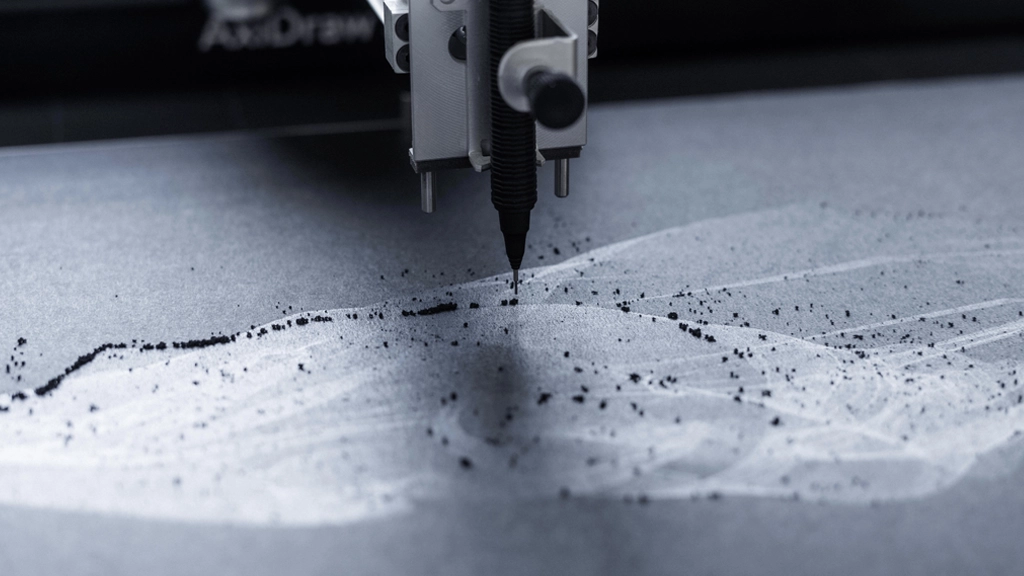
This article is for those who are involved in digital art activities, such as “I want to use a pen plotter, but I don’t know how to started using it.”
Index
- What is a Pen-Plotter?
- Types and Manufacturers of Pen-Plotters
- Recommended Pen-Plotter
- Feature | Pen-Plotter artists
- Recommended Book
What is a Pen-Plotter?
Pen plotters draw lines in vector data based on X- and Y-axis values on a plane. In the past, their primary use was to output architectural and mechanical designs and CAD drawings. Today, they are also used as drawing machines to output digital art and graphics.
Plotters draw lines with vector data, so they are not capable of filling or gradation. (It depends on how it is used, such as overlapping lines).
Also, unlike printers, it takes time to finish drawing a page.
However, the purpose and use of a plotter is different from that of a printer, so it is necessary to distinguish between the two based on these factors.
The appeal of the plotter is its writing style not found in printmaking, its flexibility in pen, ink, paper, and size, and its customizability and expandability as a drafting machine. There are new discoveries that can be seen by embodying digital art.

Types and Manufacturers of Pen-Plotters
Common pen plotters include flatbed T-type, H-type, and drum models. The following manufacturers currently sell pen plotters that can be used with drawing machines.
AxiDraw
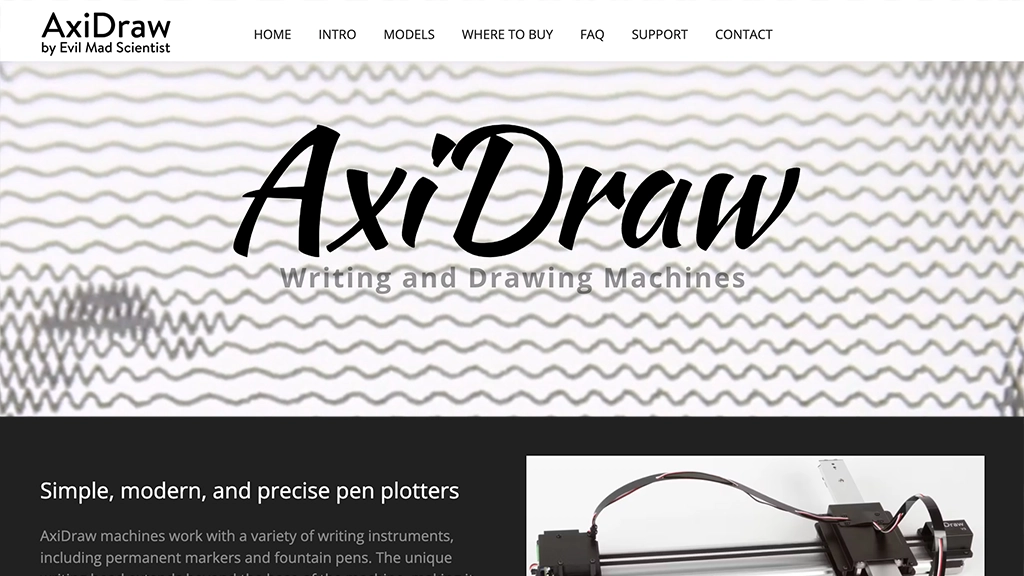
Links:
AxiDraw by Evil Mad Scientist
Shop-Evil Mad Scientist
Instagram | Evil Mad Scientist
X | Evil Mad Scientist
BANTAM TOOLS

Links:
BANTAM TOOLS – Website
Bantam Tools NextDraw™
Instagram | BANTAM TOOLS
X | BANTAM TOOLS
TerraPen
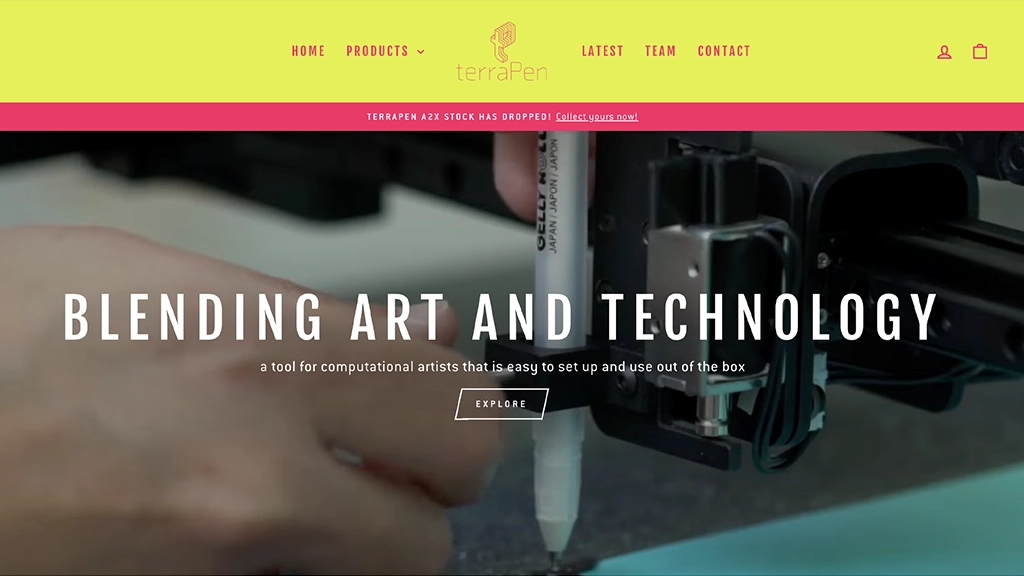
Links:
TerraPen – Website
iDraw

Links:
iDraw – Website
Recommended Pen-Plotter
I have not tried all the models, but so far we recommend “AxiDraw.” This pen plotter is a very complete robot and has excellent after-sales support in case of problems due to equipment failure. *AxiDraw’s Discord has been very helpful in solving problems.
These devices can usually be repaired by themselves. Servo motors are consumables and will need to be replaced after many years of use. Other necessary parts are also sold separately on our website.
We also have accessory parts to change the angle of the pen and upgrade parts for the motors so you can customize your plotter to your liking.
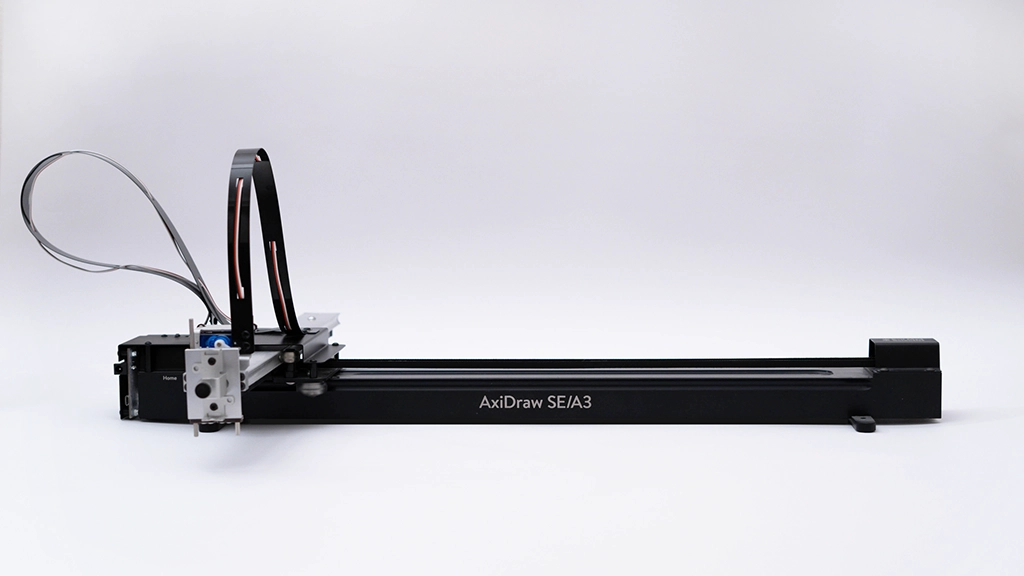
Feature | Pen-Plotter artists
There are many artists around the world who use pen plotter. Their sensitivity and quality are very high, and you can find great works on the web. Here are some of my favorite artists who are creating expressive and beautiful works of art through daily trial and error.
Andrew Strauss
Andrew is a master pen plotter and fine art printmaker based in Australia. He is also an award-winning art director and graphic designer with over 20 years of experience. His professional and quality layout sense, artistic concepts, and compelling sequential shapes and lines have attracted many fans. Available on the website or at NFT. Due to its great popularity, it is bound to sell out.
www: https://studiostrauss.shop/
instagram: https://www.instagram.com/ad_strauss/

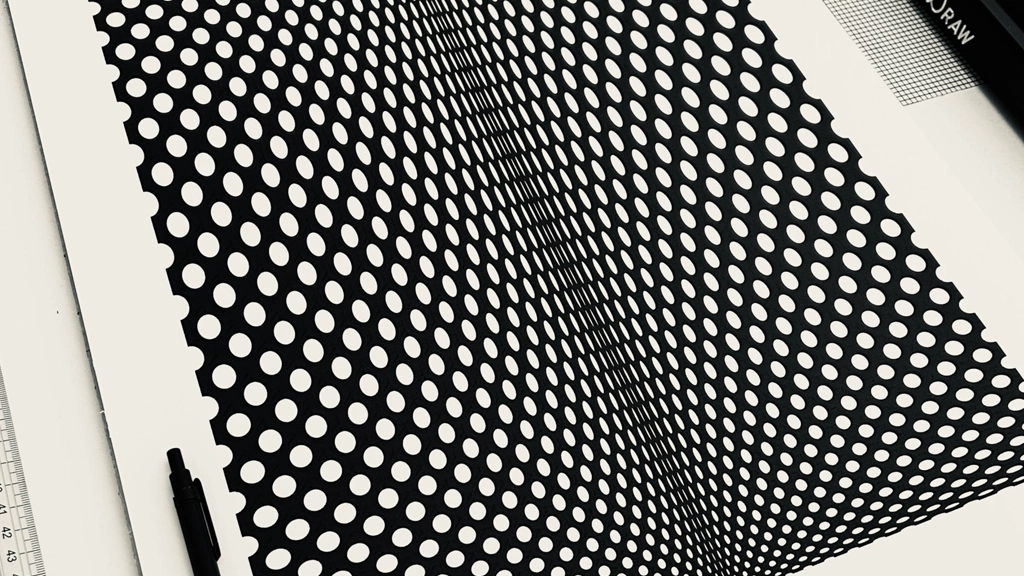
Arnaud Pfeffer
Arnaud is an industrial designer and digital artist based in Paris, France. His work is unique and beautiful not only in the finished product, but also in the manufacturing process, and is a perfect expression of the conflict between machine and material. With his experience as an industrial designer, he continues to create one-of-a-kind masterpieces by extending existing plotters with his original machines.
www: https://arnaudpfeffer.com/
instagram: https://www.instagram.com/arnaudpfef/

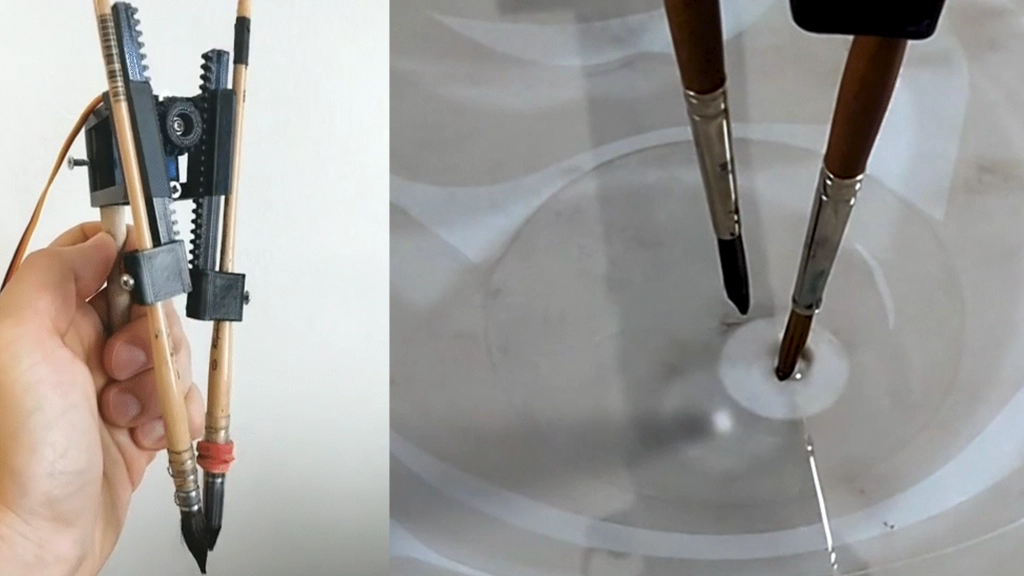
Kenny Vaden
Kenny is a generative artist based in South Carolina, USA. He uses the R Statistics Language to write graphic code for biostatistics and scientific plots. His work is digital art, yet very organic and full of life. He constantly moves between experimentation and expression, working in a variety of forms.
www: https://www.vadenart.com/
instagram: https://www.instagram.com/kenny.vaden/

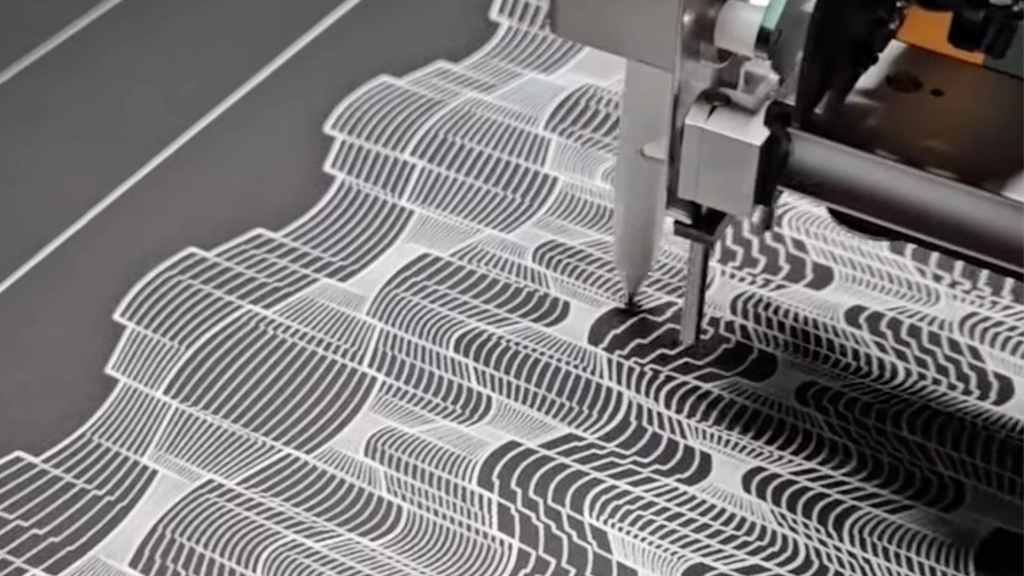
Chris Bly
Chris’ work is monochrome and very simple. Each white line on black paper is very sophisticated and beautiful, and the regular fluctuations and silhouettes fascinate the viewer. I am always inspired by his work, which takes advantage of the plotter’s ability to draw lines with precise brush pressure.
www: https://chrisbly.com/
instagram: https://www.instagram.com/machine.arm/
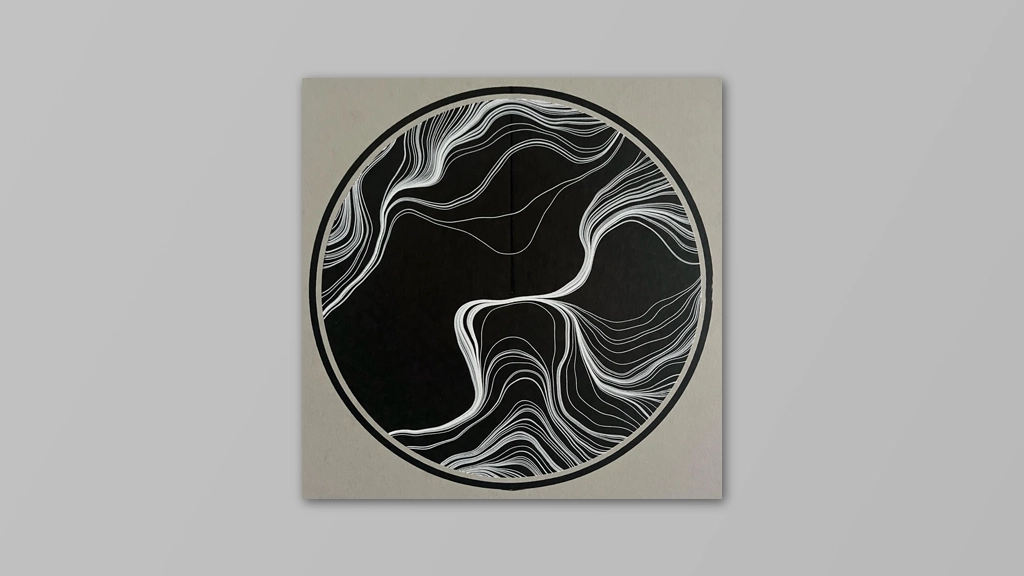
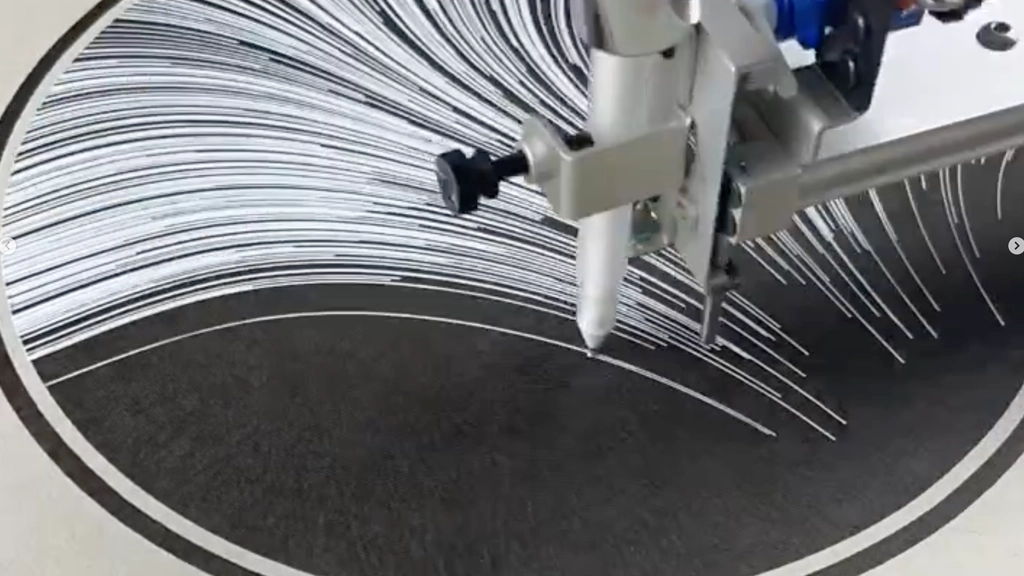
Simon Kirby
Simon is a professor of language evolution at the University of Edinburgh in Scotland. His work, a captivating blend of research and artistry, is highly stimulating. One of my favorites, “Usnea,” features motifs of lichens and is created with over a million lines drawn during its production. It transcends traditional forms of expression like painting or photography, offering a unique and ineffable allure.
www: https://www.simonkirby.net/
instagram: https://www.instagram.com/simonkirby/
shop: https://www.simonkirby.net/shop
>>Check out more about his work below.
https://www.alaluz.org/blog/simon-kirby
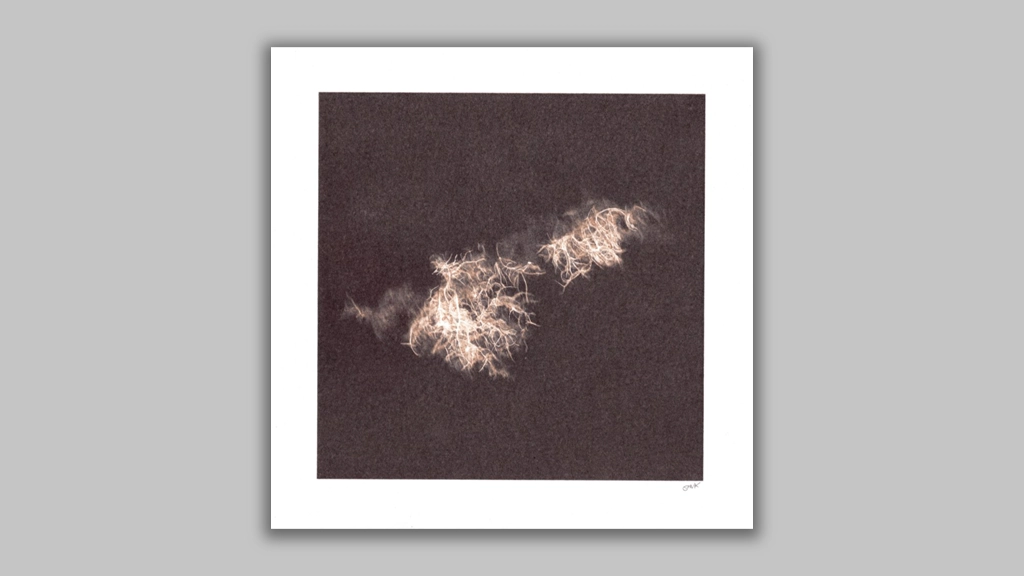
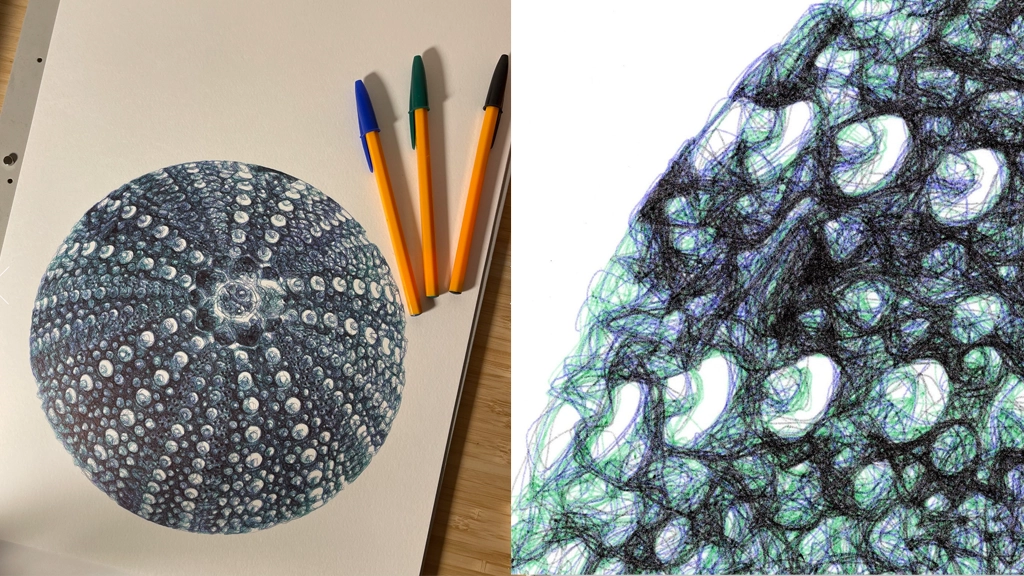
and me:) barbe_generative_diary peco
My plots are visualizations of recorded field recording sounds.
instagram: https://www.instagram.com/barbe_generative_diary/
bandcamp(NEW): https://barbegenerativediary.bandcamp.com/
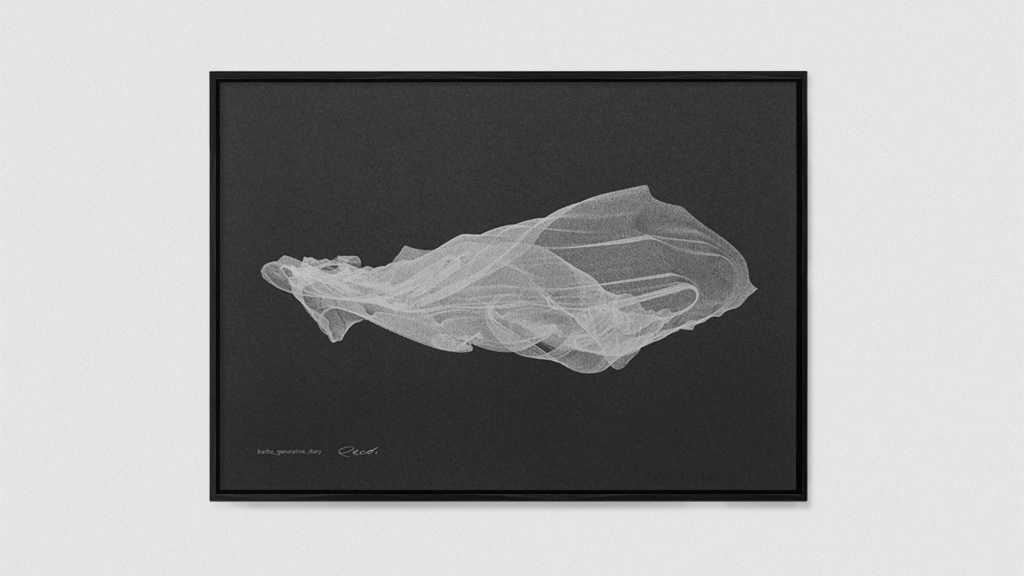

Recommended Book
“Tracing the Line: the art of drawing machines and pen plotters”.
Vetro Editions and Generative Hut partner up again to create a new AR publication featuring 100 contemporary cutting-edge artists.
The use of pen plotters and other drawing machines has become an important part of the contemporary generative and digital art scene. Tracing the Line showcases the works of 100 contemporary artists who use these machines in their practice.
Pre-Oder
VETRO EDITIONS Website – Tracing the Line –
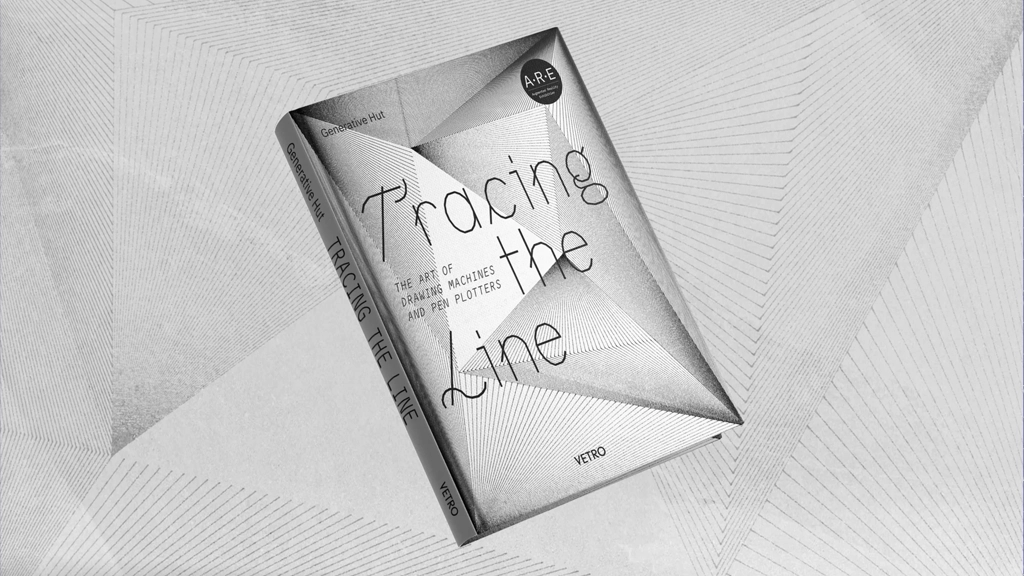
Recommended Book / Generative art
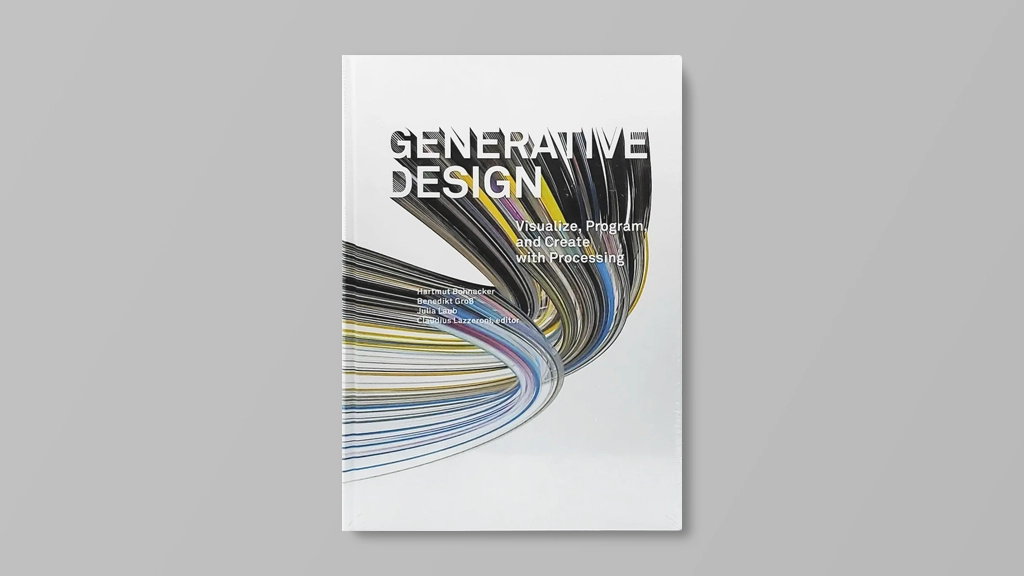
Generative Design: Visualize, Program, and Create with Processing
-Harmut Bohnacker, Benedikt Groß, Julia Laub
Generative Design takes users through specific, practical instructions on how to create their own visual experiments by combining simple -to-use programming codes with basic design principles. A detailed handbook of advanced strategies provides visual artists with all the tools to achieve proficiency. Both a how-to manual and a showcase for recent work in this exciting new field, Generative Design is the definitive study and reference book that designers have been waiting for.
—–
► Generative Design: Visualize, Program, and Create with Processing – Matt Pearson
Publication date: 2012. August 22
Length: 472 Pages
Publisher: Princeton Architectural Press
Language: English
—–


